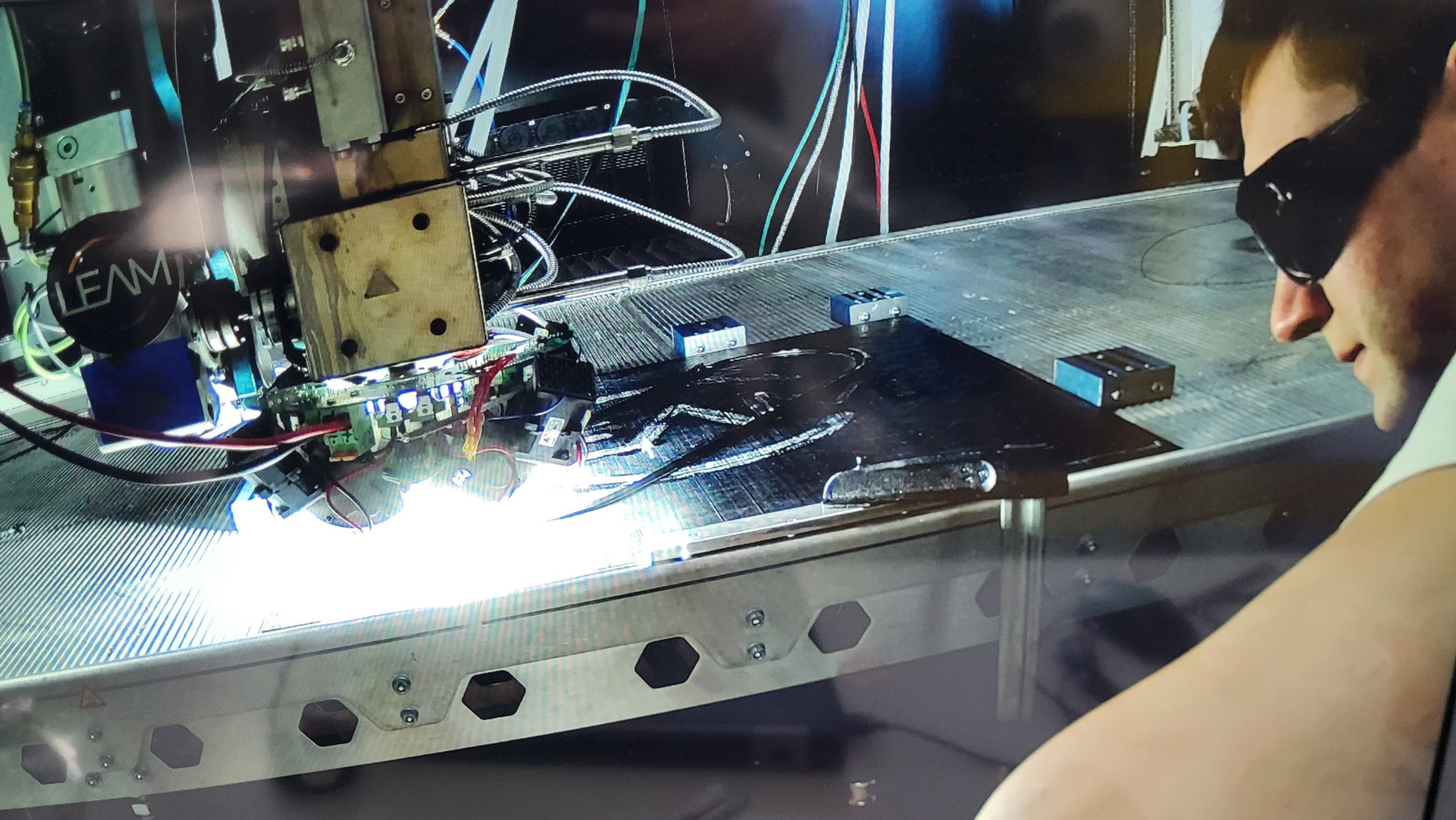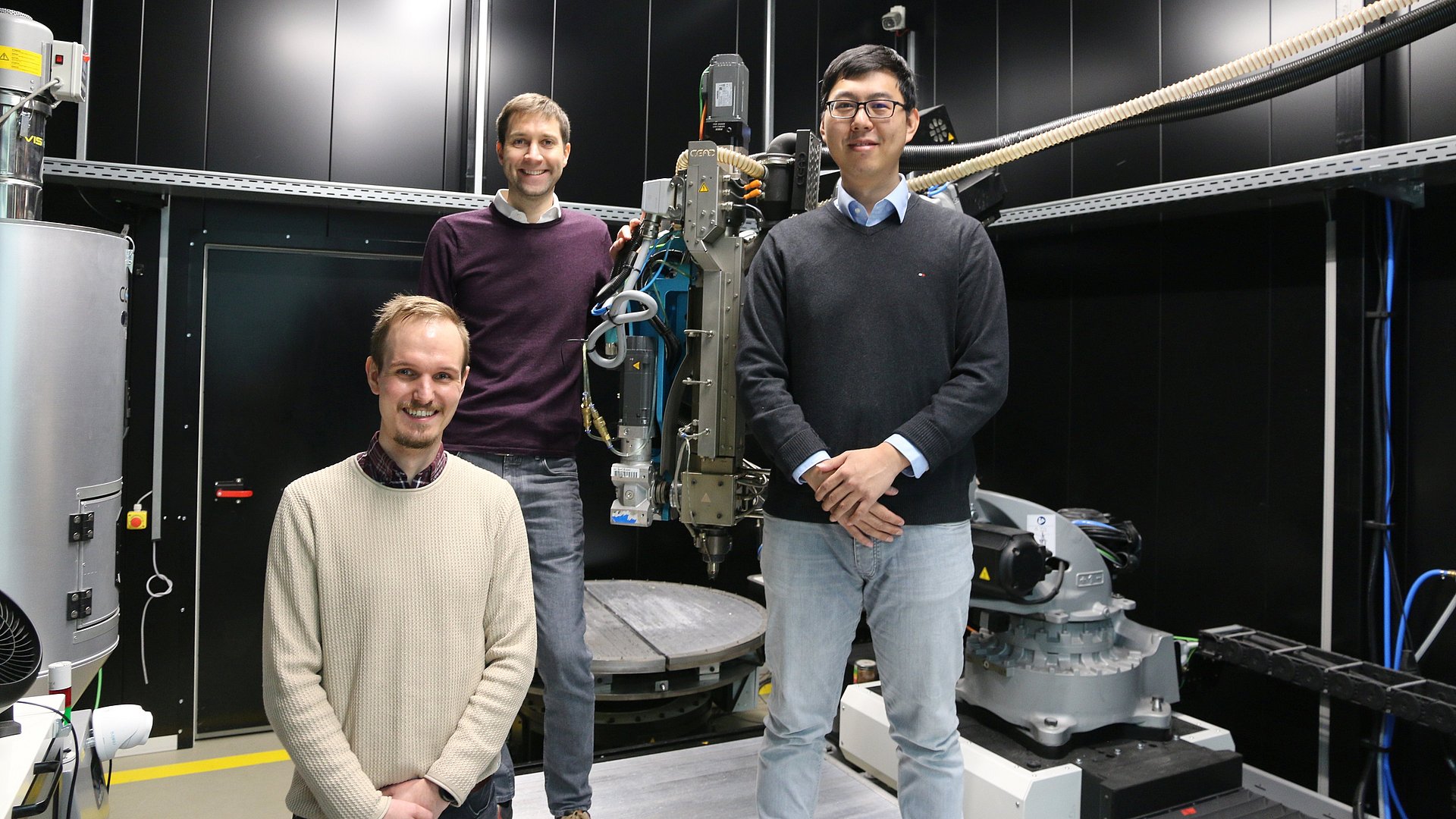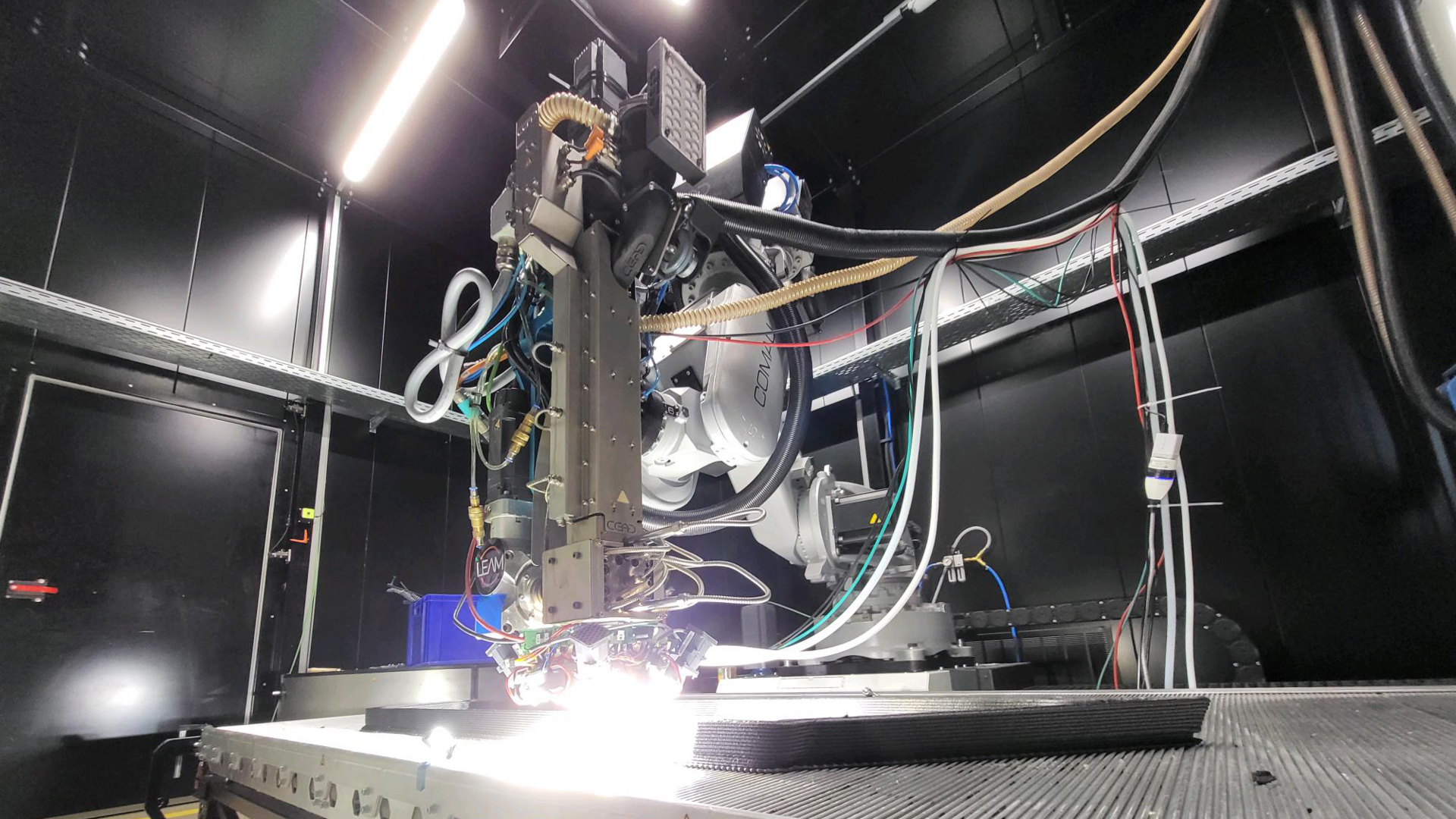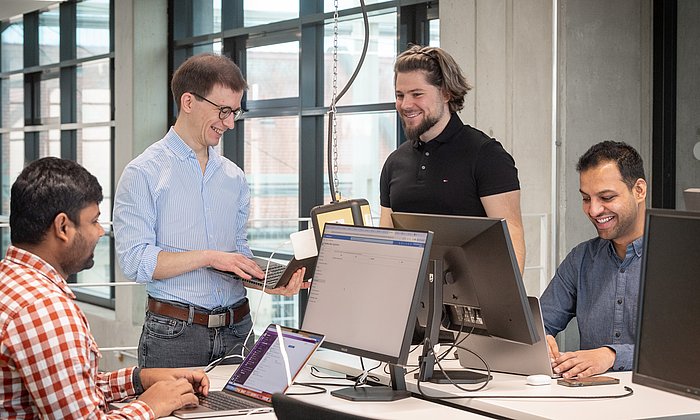TUM start-up LEAM offers new possibilities for additive manufacturing
Bundled light improves 3D printing

Sometimes, the combination of existing things creates innovations. Combining spectral light and 3D printing, for example, is one such combination that could make all the difference in industry in the future. The idea comes from the TUM start-up LEAM - which stands for Light Enabled Additive Manufacturing. The company does not sell 3D printers but wants to equip existing systems with its technology.
"The idea has been maturing for me since my Master's thesis," explains Patrick Consul, CEO and co-founder of LEAM. "Back then, I was working on sand cores made from high-performance materials for casting applications and wondered whether their possible complex structures could be achieved in other ways." In 2020, Patrick Consul met Ting Wang, who had also been researching in this field for years. "It was immediately clear that we had a common basis for an innovative approach. But to achieve our goal, we needed one more person," explains Ting Wang, CTO of LEAM. This person was to be Benno Böckl, who was writing his doctoral thesis in automated manufacturing processes for carbon parts before taking on his role as COO at LEAM. "The work is currently on hold. Getting our company up and running demands my full attention, but I'll get the title!" says Böckl. What all three founders have in common is that they worked at the Chair of Carbon Composites at TUM before founding the company.

Complex structures of high quality
3D printing enables complex component structures that are impossible with conventional processes such as injection molding. However, conventional printers achieve a different component quality than the proven production methods. This is due to the individual layers during printing, which are not always optimally joined together. LEAM has developed a technology that enables optimally bonding individual layers together during 3D printing using high-performance plastics. This allows the founders to achieve a component quality previously only achieved by injection molding, for example. This is made possible by high-performance LEDs arranged around the 3D printer's print head and heating the material in front of the print nozzle at the right moment. This allows the existing and freshly printed layers to be optimally bonded together.
Light is significantly cheaper than laser technology
The approach is familiar; such production qualities have been possible for some time with the help of laser systems. However, lasers are extremely expensive and dangerous for personnel. This is why LEAM relies on focused light and was the first in the world to bring this technology to market maturity. The advantages: simple retrofitting of existing printers with light technology, a small size, a high level of occupational safety for machine operators, and a reduction in investment costs for companies - compared to laser technology - of around 90 percent.
The three founders see their technology being used primarily in producing large components with complex structures that are not in demand in large quantities. This is where the advantages of the 3D printing process can be best exploited. Potential customers can be found primarily in the aerospace sector and prototype construction. However, the system can also be adapted to other areas that rely on additive manufacturing.

Start-up support from the TUM network
The TUM Venture Lab Additive Manufacturing supported the young engineers during the start-up process. The TUM Venture Labs each specialize in one crucial field of technology. They offer the founding teams a direct connection to cutting-edge research in this field, specific technical infrastructure, tailored training programs, expertise for the respective market, and global networking with the industry and investors.
Market entry planned for 2025
LEAM is planning to enter the market in 2025; a few components are still missing for the production of the retrofit solution. Until then, the three founders are concentrating on scaling down their technology. This should enable smaller 3D printers to achieve better results, which would expand the start-up's customer base. Patrick Consul is optimistic about the future: "The system works, and after years of development, we can now demonstrate this in practice. There is no lack of interest from the industry, as we are solving a costly problem for our customers."
Technical University of Munich
Corporate Communications Center
- Andreas Huber
- presse@tum.de
- Teamwebsite


![[Translate to English:] [Translate to English:]](/fileadmin/_processed_/9/e/csm_Libcycle_1_64e83df7a8.jpg)